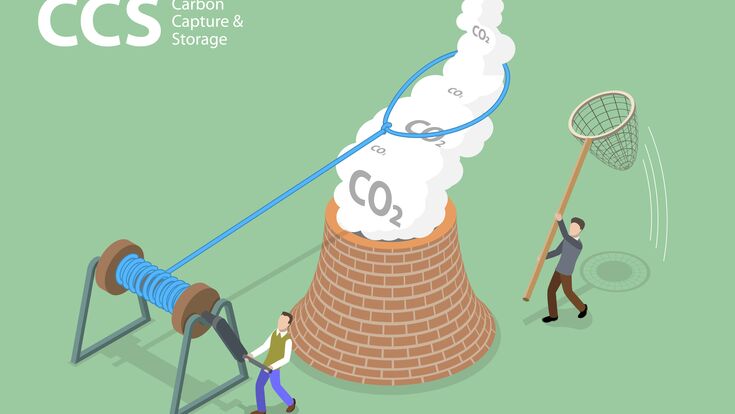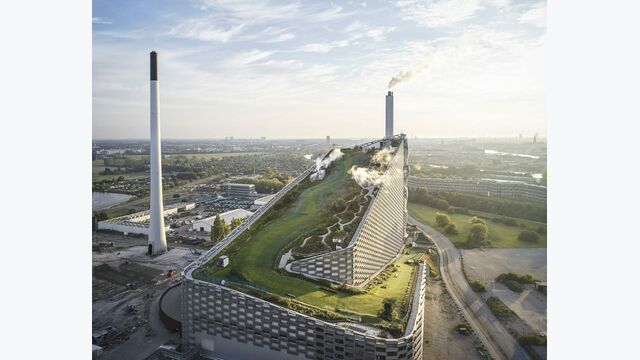Interview : "I envision a future where every WtE is equipped with a CCUS facility"

Could you give a short overview of the current status of CCUS technologies?
Various carbon capture utilization and storage (CCUS) technologies are mature and deployed across different sectors. Other technologies are still in development and are aiming to bring the down the costs of CCUS and to tackle the shortcomings of mature technologies.
For example amine solvents circulating in large columns to capture and consequently release purified CO2
are already applied in a waste-to-energy (WtE) context as for instance at the AVR WtE plant at Duiven in the Netherlands.
In terms of technology development, a lot of R&D is ongoing and new initiatives are popping up every day. New solvents are being developed aiming to reduce the energy penalty and OPEX of the CC process. Alternatives to the conventional column set-up are being explored on pilot levels, aiming to reduce the footprint and CAPEX of these installations.
While the interest in CCUS has been there for many years, more recent funding opportunities and regulatory trends show a real uptake of the technologies, and all hard-to-abate sectors are now working on the implementation of CCUS. CCS integration in Waste-to-Energy has the potential to make Waste-to-Energy even carbon-negative. It would be a tremendous solution to reduce GHG-emissions from non-recyclable waste.
How many WtE plants with CCUS are there worldwide – in operation, planned?
CCUS projects for Waste-to-Energy plants are taking off in Europe. For what concerns CCU, the Duiven plant in the Netherlands is already in operation, capturing CO2 and providing it to local greenhouses. For CCS, at least 4 projects are fairly advanced: the Klemetsrud plant (Norway, part of the Longship project), the Twence plant (Netherlands) which should start operations in 2023, the Amager Ressource Center (Denmark) which should be fully operational by 2025, and the Rakkestad plant (Norway) which is still in the trial phase of the project. Other pilots and projects are also in development for example in France and the UK.

Why is CCUS relevant for WtE?
In terms of storage as approximately 50% of the WtE CO2 emissions are biogenic[1], the deployment of CCS can allow the sector to become carbon negative. In other words, WtE combined with CCS becomes a carbon dioxide removal technology like direct air capture. Climate experts point out that carbon dioxide removal is a requirement to limit global warming below 1,5°C. Here WtE has a crucial role to play. WtE facilities typically treat in the order of several 100 000 tons of waste each. By deploying CCS we can start extracting CO2 from the atmosphere at a large scale in a short term.
In terms of utilization carbon building blocks will still be needed by many industries. These building blocks based on CO2 captured from WtE plants, can be provided for instance to the chemical sector and contribute to a circular economy.
It is good to keep in mind that even without CCUS we are contributing to reduce GHG emissions. Waste-to-Energy plants generate electricity and heat from non-recyclable waste, which would otherwise be produced by fossil fuels. In addition, we mitigate the production of methane emissions, a gas 84 times more potent than CO2 over a 20 year period, from landfills while treating our non-recyclable waste in a sustainable manner. The reduction of GHG emissions is the rightful priority in Europe to mitigate climate change.
[1] Biogenic CO2 is CO2 that was originally present in the atmosphere and is taken up by biomass. Biogenic carbon enters the waste to energy installation as for example non-recyclable paper, non-recyclable textile, food waste, …. When captured and permanently stored, these biogenic CO2 emissions are considered carbon negative as they are permanently removed from the atmosphere.
What is the advantage over technologies that remove CO2 directly from the air?
Reducing the CO2 concentration in the atmosphere is crucial for limiting climate change.
First of all, current direct air capture technologies still require a lot of renewable energy. At this moment there are only a few places in the world which have a surplus in renewable energy. A WtE produces -partly renewable- energy which can be used in the capture process.
Secondly, the CO2 concentration in the air is in the ppm level while the CO2 concentration in WtE flue gasses is approximately 10%.
Thirdly, the cost per captured ton of CO2 is around $500 dollar for DAC, for WtE this is around a factor 10 lower.
Why is CCUS so cost- intensive and what is needed to make the technology more attractive in this regard?
CCUS is as cost-intensive as any ‘new’ technology can be. As CCUS will be more and more deployed, the cost will naturally decrease. A comprehensive regulatory framework at EU-level will contribute to incentivize investments in the technology, and help to develop a market for ‘recycled’ and stored CO2, for instance. CCUS hubs, meaning large-scale networks for transport, utilization and storage of carbon, are also a way to decrease costs by economies of scale.
One current use of the captured CO2 is enhanced oil recovery. Does that not defeat its purpose?
Historically CO2 has been used for enhanced oil recovery, know-how and technology based on these experiences can now be used for more sustainable storage solutions. Looking forward, an increasing number of alternatives are being developed to utilize and store the CO2 in a more sustainable way.
Where is it best to storage the captured CO2 and what storage capacity is needed? Do all countries have enough storage capacity?
According to the IEA, Permanent underground storage in geological formations is available globally, and the theoretical capacity exceeds the amount of carbon needed to be captured and stored to reach climate neutrality. However, infrastructure must be developed to transport CO2 to those formations, as most WtE plants are not situated close-by. Currently, there is no large-scale network for the transport of CO2 in Europe, but upcoming EU regulation will address this issue. For these sites mineralization could be at least partly a permanent and local storage solution.
How safe is the transport and storage if the captured CO2?
According to the Intergovernmental Panel on Climate Change (IPCC), appropriately managed geological reservoirs are safe, and very likely to retain over 99% of the sequestered CO2 for longer than 100 years. Transport, either through ships or pipelines, pose no higher risk than the transport of natural gas or oil.
How do you see the future of CCUS and WtE?
I see it with optimism and envision a future where every WtE is equipped with a CCUS facility. This vision is becoming a reality as I see projects taking off at a fast rate in the Waste-to-Energy. Nevertheless, a solid regulatory framework is needed to ensure the successful implementation of CCUS. Access to transport infrastructure and storage, for instance, will be a key challenge to address as most WtE plants are situated away from geological storage. Clear rules on the certification of captured carbon are also necessary, especially the recognition of the biogenic share of WtE emissions and the potential for the sector to be carbon negative. Access to funding and public support is also pivotal to contribute to the uptake of new projects, and accelerate the deployment of these crucial technologies for the decarbonization of the European industrial sector.


